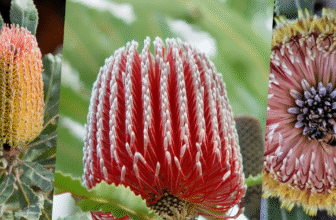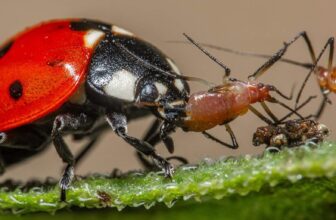Banksia in Australia: The Ultimate Guide for 2025 and Beyond
Written by an Aussie horticulture tragic who has killed (and finally mastered) more Banksias than he cares to admit.
Quick Table of Contents
- Banksia at a Glance
- Why Banksias Matter in Aussie Culture
- Landscape Value & Wildlife Benefits
- Live vs Artificial: Which Makes Sense Where?
- Choosing the Right Banksia by Habit
- Soil, Climate & Planting Essentials
- Care Calendar: Water, Feed & Prune
- Common Problems & Quick Fixes
- FAQs
- Where to Next?
Banksia at a Glance
Walk along any coastal trail from Geraldton to the Gold Coast and you’ll spot a Banksia: rugged leaves, cone‑like flowers, and nectar that’s been sweetening bushwalkers’ tongues since before bushwalking was even a word. The genus holds 170‑plus species, all native to Australia. Whether you’re after a towering tree (Banksia grandis), a hedging shrub (B. spinulosa ‘Birthday Candles’) or a ground‑hugging prostrate type (B. blechnifolia), there’s a Banksia that’ll slot into your patch.
Why Banksias Matter in Aussie Culture
- First Peoples’ knowledge – Indigenous Australians sipped the “bush cordial” straight from flower spikes and used dry cones as fire‑starters.
- European discovery – Botanist Sir Joseph Banks pocketed samples in 1770; the genus now bears his name.
- Children’s story‑time villain – May Gibbs’ classic 1918 tale Snugglepot & Cuddlepie cast the spiky cones as the mischievous Big Bad Banksia Men, fixing the plant in Aussie childhood imagination.
- Modern symbolism – You’ll find Banksias on AFL mascots, tourism logos and even the WA state emblem. They’re the green‑and‑gold equivalent of a maple leaf.
Landscape Value & Wildlife Benefits
| Benefit | Best Banksia Picks | Why it Works |
|---|---|---|
| Attract honeyeaters | B. integrifolia, B. ericifolia | High‑nectar spikes almost year‑round |
| Drought‑hardy coastal planting | B. aemula, B. serrata | Salt‑spray tolerant leaves |
| Fire‑wise landscaping | B. prionotes (low litter) | Fewer fallen leaves, easier fuel reduction |
Side note: Plant two or three species with staggered flowering to keep bees fed twelve months of the year.
Timber & Craft Uses
- Density & figure – Around 720 kg m‑³; the cones create a honeycomb figure prized for turning.
- Popular products – Hand‑turned bowls, pen blanks, knife handles, even acoustic‑guitar soundboards when laminated.
- DIY tip – Stabilise cone blanks with resin before turning to prevent tear‑out, then finish with food‑safe oil for a silky, nut‑brown sheen.
- Eco note – Most craft timber comes from post‑harvest forestry offcuts or storm‑fallen B. grandis and B. serrata; always ask suppliers for FSC or similar certification.
Live vs Artificial: Which Makes Sense Where?
Whether you crave forever‑green good looks or the grounding scent of a living native, your choice comes down to water, effort and vibe. Use the cheat‑sheet below, then read the quick pros and cons.
| Scenario | Choose Live Banksia | Choose Artificial Banksia |
|---|---|---|
| Water use | Rain‑wise gardens, grey‑water systems, drip irrigation | Zero water – perfect for drought‑restricted rentals |
| Maintenance | Happy to prune once a year and mulch | Want set‑and‑forget décor; just dust every few weeks |
| Climate | Mild coastal or well‑drained inland soils | Extreme shade, air‑conditioned offices, balconies with hot wind |
| Soil quality | Sandy loam, pH 5.5‑6.5, good drainage | Heavy clay, pots without drainage, no garden at all |
| Wildlife & pollinators | Essential: birds, bees, butterflies | Not a priority (purely aesthetic) |
| Budget long‑term | Small upfront cost, grows in value over years | One‑off purchase; price per stem equal to a year of fertiliser |
| Aesthetics | Seasonal change: new leaf flush, cone ripening | Colour‑locked perfection, year‑round bloom display |
Five Reasons to Grow the Real Deal
- Native habitat: Nectar feeds honeyeaters and pygmy possums.
- Therapeutic scent: Crushed leaves release a fresh eucalyptus‑meets‑honey aroma.
- Eco‑cooling: Leaf canopy reduces heat island effect around patios.
- Bush tucker potential: Old flower spikes make a natural sweetener in bush tea.
- DIY mulch: Spent cones shred into nutrient‑rich ground cover.
When Artificial Outshines Nature
- Water‑wise décor – Victoria’s stage‑3 restrictions? Faux stems stay lush.
- Low‑light interiors – South‑facing apartments or cafés with no direct sun.
- Allergy‑friendly events – Pollen‑free for wedding tables and reception lobbies.
- Instant impact – No three‑year wait for a wow‑factor cone; unbox and style.
- Zero‑risk for pets – No curious pup chewing fresh leaves.
Pro tip: Blend both worlds—grow a dwarf B. spinulosa in the courtyard and pair it with a bowl of dried cones on the coffee table for texture.
Need in‑depth styling tricks or vetted product links? 👉 Dive into our Artificial Banksia Décor Guide—10 faux stems tested under Aussie sun for fade‑proof colour.
Choosing the Right Banksia by Habit
Trees (over 6 m)
- Coastal Banksia (B. integrifolia) – Fast growth, sandy soils
- Bull Banksia (B. grandis) – Iconic WA cones the size of stubby coolers
Shrubs (1–5 m)
- Hairpin Banksia (B. spinulosa) – Hedge hero, bird magnet
- Swamp Banksia (B. robur) – Thrives in boggy spots
Groundcovers & Prostrate Types (<0.5 m)
- Creeping Banksia (B. blechnifolia) – Red new growth, sand dune stabiliser
- Dwarf ‘Birthday Candles’ – Pot‑perfect, non‑stop blooms
Soil, Climate & Planting Essentials
- Soil pH – 5.5–6.5 is the sweet spot. Alkaline clay? Mix in sulfur chips and coarse compost.
- Drainage – If you can wring water from a handful of soil, raise the bed by 200 mm.
- Sunlight – Minimum six hours; coastal species can handle harsh arvo sun.
- Planting window – Autumn for southern states, early spring for the Top End.
Quick‑fire Planting Steps
- Dig a hole twice as wide, same depth as the pot.
- Backfill with 30 % washed river sand if your soil holds water.
- Water in with a low‑phosphorus native tonic.
Care Calendar: Water, Feed & Prune
| Season | Task | Tip |
|---|---|---|
| Summer | Deep water every 10–14 days | Mulch to 5 cm |
| Autumn | Light prune after flowering | Shape hedges now |
| Winter | Watch for root rot in heavy rain zones | Improve drainage |
| Spring | Dose with native‑formulation fertiliser | Avoid P > 2 % |
Common Problems & Quick Fixes
- Yellow leaves? Probably iron deficiency; apply a chelate foliar spray.
- No flowers? Check sunlight hours; trim over‑shadowing branches.
- Root rot (Phytophthora)? Remove mulch from stem base and drench with phosphite.
- Borer holes in cones? Native weevils – usually cosmetic. Cut off heavily infested cones.
FAQs
(Add 10–12 more FAQs as needed; wrap in Yoast FAQ block for schema.)
Where to Next?
- 🌸 Explore Banksia Flowers & Bloom Times
- 🌲 Compare Banksia Trees for Large Gardens
- 🌿 See the Best Shrub & Groundcover Banksias
- 🪴 Artificial Banksia Décor Guide
Have a question we didn’t cover? Drop a comment below or ping us on Instagram @GardenGreenAU – we answer every DM.
Author
Huma Naveed – Landscape designer, plant tragic and proud member of the Australian Native Plants Society.
Disclosure: some links on this page may be affiliate links. As an Amazon Associate we earn from qualifying purchases at no extra cost to you.
Banksia in Australia is the most common and favourite.





